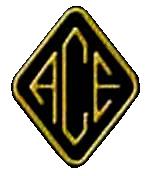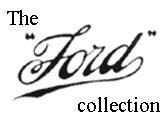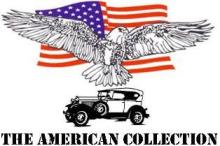1942 Ford 21A Fordor V8 Series Sedan
The 1942 model range saw Ford redesign the Super Deluxe range. Released, as usual, in the September of the previous year, the launch received a somewhat muted response. Everyone felt war was on the way and buying a new car wasn’t the most important thing to consider. President Franklin D. Roosevelt had already declared a state of National Defence Emergency and production for the war in Europe had taken resources and factory capacity away from the domestic market.
There were four series, 21A Super Deluxe and Deluxe which had V8 engines and the 2GA Deluxe and Special series’ which both had 6cyl engines. The 221 Cu. In. V8 engines developed 90 bhp @ 3800 rpm on a 6.2-1 compression ratio. This was mated to a three speed gearbox controlled from the steering column. All the range ran on a 114-inch wheelbase and all the cars had hydraulic brakes behind their body colour pressed steel wheels.
The new series of convertibles, sedans, coupes and station wagons, sported bright work around the windows, new wings (fenders), a new stamped steel grille (easier to make and repair than the old cast ones), the rear lights (which also had chrome work bases), were repositioned, the running boards of early Fords had almost disappeared into the body and with its wider track and lower stance (being a full inch closer to the ground) it was a most handsome car. The lower centre of gravity also provided better handling too. On the inside, the car had an arm rest on the left front door, a full circle horn ring on the steering wheel, Wind up front windows and an electric clock!
Price went from $850 for the 2-door coupe to $1100 for the 6-passenger station wagon. The convertible, of which 2,920 units were produced, sold for $1,080. The most popular body style was the Fordor (or six person 4 door sedan) which sold for $920.
When Japan attacked Pearl Harbour on December 7th 1941, only three months after the new cars launch, everything changed. December 31st. saw the Automotive Council for War Production set up to put all the facilities of the automotive industry onto all-out war production “for the duration of hostilities”. On the 9th of February 1942 production of all civilian cars came to a halt, followed by the cessation of civilian truck production on 3 March. Immediately after that petrol rationing and a national speed limit came into effect, the aim of which was to save fuel and rubber.
Military contracts saw the 21A in service with the U.S. and British forces. These were generally the 21A Deluxe ‘fordor’ sedan models which served as staff cars for the U.S. Navy, Army and Army Air Force. U.S. Police forces also took delivery of some cars while the British used them in the North African desert, after suitable Military modifications were made, things such as changing to 9'00-13 desert tires, adding various equipment racks-brackets, as well as a canvas-covered observation opening in the roof. Ford produced 89,402 of the Super Deluxe model amongst a total output of 160,211 vehicles during the 1st model year. 24,846 vehicles were sold before the US entered WWII.

1/72nd scale kit.
Built by Ian.
The ‘ACE’ company hail from the Ukraine where they produce limited run kits specialising in "Warsaw Pact" subjects.
Due to the ‘limited run’ moulding systems quality can fade towards the end of a run, with flash sometimes becoming a problem, but the level of detail is quite impressive. The quality of fit varies but by following the clearly drawn instructions, and taking due care, the kit builds into nice model.
A little cleaning up, sanding and trimming was needed in a few places, most notably the Chassis-axles. All things considered it is a nice kit well worth the effort of taking the time to fit windows.
Ian built the model using brush applied acrylic paints from aeromaster and Vallejo.
RETURN TO :-

